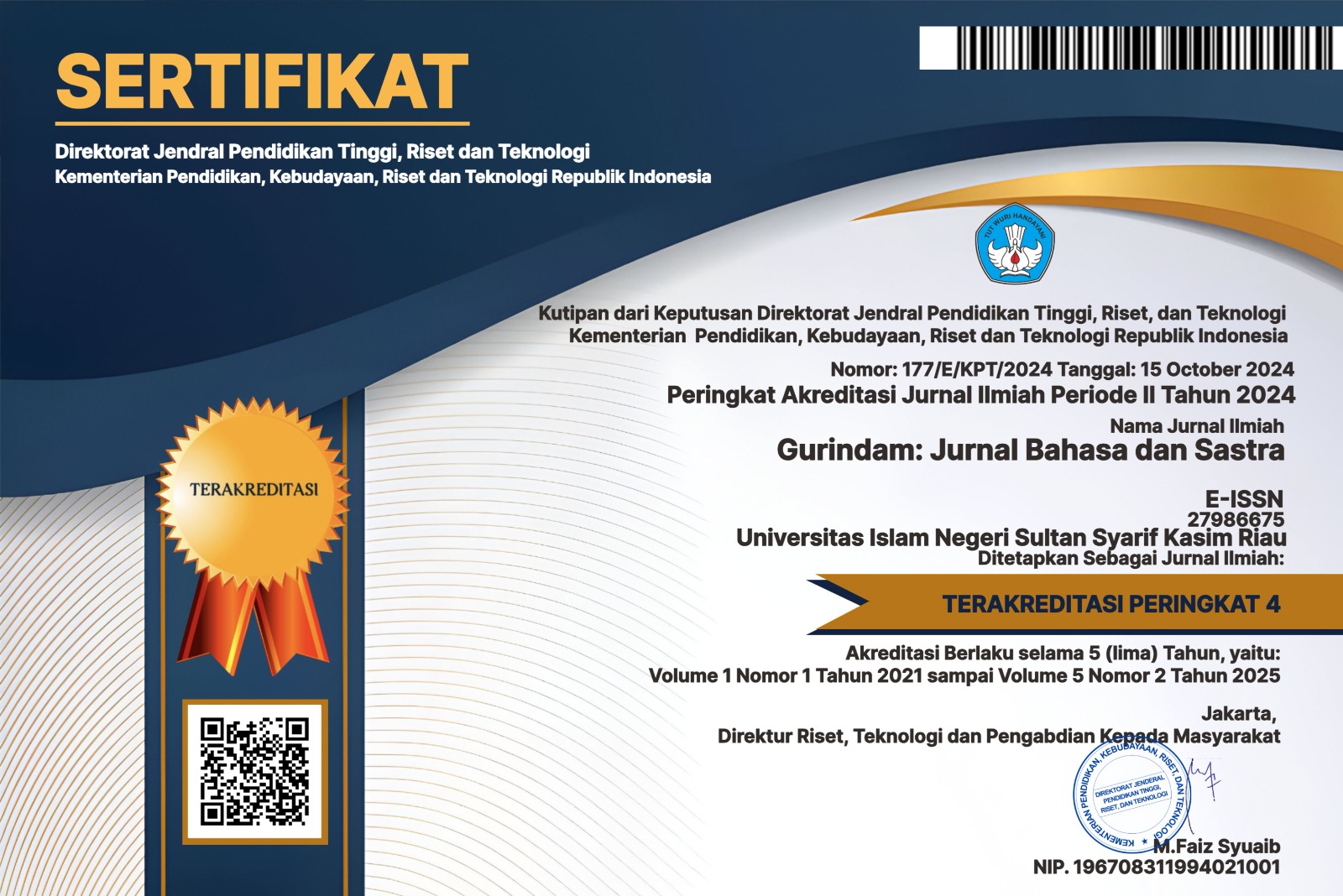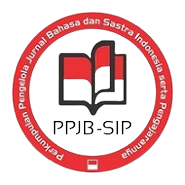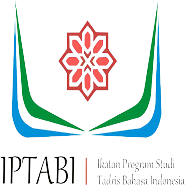An Exploration of Self-Directed Learning in Speaking English
Abstract
Full Text:
PDFReferences
Arslantas, S. &. (2017). The Effect of Using Self-monitoring Strategies in Social Studies Course on Self-monitoring, Self-regulation and Academic Achievement. International Journal of Research in Education and Science, 3(2).
Chee, T. S. (2011). Self‐directed Learning with ICT: Theory, Practice and Assessment. Singapore: Ministry of education, Educational Technology Singapore.
Creswell, J. W. (2012). Educational Research: Planning, Conducting, and Evaluating Quantitative and Qualitative Research. United States: Pearson Education.
Gibbons, M. (2002). The Self-directed Learning Handbook Challenging Adolescent Students to Excel. San Francisco: Jossey-Bass.
Hollins, E. R. (2014). Teacher Preparation for Quality Teaching. Journal of Teacher Education, 2.
Jossberger, H. G. (2010). The Challenge of Self-directed and Self-regulated Learning in Vocational Education: A Theoretical Analysis and Synthesis of Requirements. Journal of Vocational Education and Training, p 415—440.
Mahmud, A. (2017). The Descriptive Study of Self-directed Learner in Speaking English at Non-English Department in IAIN Sultan Amai Gorontalo. Al-Lisan Journal Bahasa, 2.
Majedi, N. &. (2016). The Effect of Self-directed Learning on Iranian Intermediate. Journal of Applied Linguistics and Language Research, 3(2).
Malison, K. (2018). An Exploratory Study of Self-directed Learning: The Differences Between It and Non-it Employees in Thailand. Journal of Entrepreneurship Education, 21(3).
Manning, G. (2007). Self-directed Learning: A Key Component of Adult Learning Theory. Journal of the Washington Institute of China Studies, 2(2).
Moradi, H. (2018). Self-directed Learning in Language Teaching-learning Processes. Modern Journal of Language Teaching Methods (MJLTM), 8(6).
Prasanti, R. A. (2020). The Use of Conversation Diary in Enhancing Students’ English Speaking Skill. Journal of Educational Research and Evaluation.
Pratiwi, N., & Pritanova, N. (2017). Pengaruh Literasi Digital Terhadap Psikologis Anak dan Remaja. Semantik, 6(1), 11—24.
Shahrouri, E. (2016). The Impact of Garrison’s Model of Self-directed Learning on Improving Academic Self-concept for Undergraduate Students" “Aue as a Model. International Journal of Education, Learning and Development.
DOI: http://dx.doi.org/10.24014/gjbs.v4i2.34273
Refbacks
- There are currently no refbacks.
PENGINDEKS:
PUBLISHER:

Gurindam: Jurnal Bahasa dan Sastra disebarluaskan di bawah Creative Commons Attribution 4.0 International License.




.png)







.png)
.png)

.png)